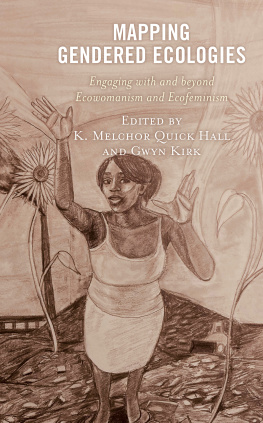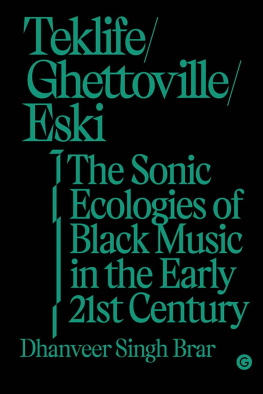Leilani Nishime - Racial Ecologies
Here you can read online Leilani Nishime - Racial Ecologies full text of the book (entire story) in english for free. Download pdf and epub, get meaning, cover and reviews about this ebook. year: 2018, publisher: University of Washington Press, genre: Politics. Description of the work, (preface) as well as reviews are available. Best literature library LitArk.com created for fans of good reading and offers a wide selection of genres:
Romance novel
Science fiction
Adventure
Detective
Science
History
Home and family
Prose
Art
Politics
Computer
Non-fiction
Religion
Business
Children
Humor
Choose a favorite category and find really read worthwhile books. Enjoy immersion in the world of imagination, feel the emotions of the characters or learn something new for yourself, make an fascinating discovery.

- Book:Racial Ecologies
- Author:
- Publisher:University of Washington Press
- Genre:
- Year:2018
- Rating:3 / 5
- Favourites:Add to favourites
- Your mark:
- 60
- 1
- 2
- 3
- 4
- 5
Racial Ecologies: summary, description and annotation
We offer to read an annotation, description, summary or preface (depends on what the author of the book "Racial Ecologies" wrote himself). If you haven't found the necessary information about the book — write in the comments, we will try to find it.
Racial Ecologies — read online for free the complete book (whole text) full work
Below is the text of the book, divided by pages. System saving the place of the last page read, allows you to conveniently read the book "Racial Ecologies" online for free, without having to search again every time where you left off. Put a bookmark, and you can go to the page where you finished reading at any time.
Font size:
Interval:
Bookmark:

Racial Ecologies
EDITED BY
Leilani Nishime and
Kim D. Hester Williams
UNIVERSITY OF WASHINGTON PRESS
Seattle
Copyright 2018 by the University of Washington Press
Printed and bound in the United States of America
Composed in Warnock Pro, typeface designed by Robert Slimbach
22 21 20 19 18 5 4 3 2 1
All rights reserved. No part of this publication may be reproduced or transmitted in any form or by any means, electronic or mechanical, including photocopy, recording, or any information storage or retrieval system, without permission in writing from the publisher.
UNIVERSITY OF WASHINGTON PRESS
www.washington.edu/uwpress
LIBRARY OF CONGRESS CATALOGING-IN-PUBLICATION DATA ON FILE
Cover illustration by Christi Belcourt
Lucille Clifton, excerpt from mulberry fields, from The Collected Poems of Lucille Clifton , ed. Kevin Young and Michael S. Glaser. Copyright 2000 by Lucille Clifton. Reprinted with permission of The Permissions Company Inc. on behalf of BOA Editions Ltd., www.boaeditions.org.
Nathaniel Mackey, excerpts from Song of the Andoumboulou: 33, from Whatsaid Serif . Copyright 2000 by Nathaniel Mackey. Reprinted with permission of The Permissions Company Inc. on behalf City Lights, www.citylights.com.
giovanni singleton, Day 49, from the collection Ascension (Denver: Counterpath, 2012), reprinted by permission of the author.
CONTENTS
Curtis Marez
Leilani Nishime and Kim D. Hester Williams
Dian Million
Stephen Nathan Haymes
Min Hyoung Song
Tiffany Lethabo King
Jessi Quizar
Dominique Bourg Hacker
Julie Sze
Erica Tom
Ana Elizabeth Rosas
Zoltn Grossman
Sunny Chan
Catalina Mare de Ons
Ashley Cheyemi McNeil
Yu-Fang Cho
Kim D. Hester Williams
Leilani Nishime and Kim D. Hester Williams
FOREWORD
RACIAL ECOLOGIES
A View from Ethnic Studies
CURTIS MAREZ
During the historic dot-com bubble, that period of explosive growth and enormous profits in the technology industry that began around 1995 and burst in 2001, I taught at the University of California, Santa Cruz, situated between the strawberry fields of Watsonville and Silicon Valley. At a time of shrinking state investments in public education and as part of his aspiration to globalize the humanities, our dean advised faculty to seek patrons by researching and writing hagiographies of the new high-tech elite. By contrast, the working-class students of color in my large undergraduate lecture course on US popular culture pressed me to research the Homies.
The last few decades have witnessed an explosion of collectible plastic figurines for sale, and leading the way have been the Homies, a popular line of small, plastic figurines representing the largely Chicanx inhabitants of an imaginary barrio somewhere near Silicon Valley. These finely detailed and painted figures of various barrio types, with names like Smiley, Shy Girl, and Spooky, were widely sold in gumball machines, at swap meets, on eBay, and on the Homies official website. Each of the almost two hundred figures has a name and a brief biography, and over one hundred million of them have been sold. Their creator, David Gonzales, developed the Homies merchandising empire in his office in Oakland, California, and he has based many of the figures on people from his hometown of San Jose, the diverse metropolis next to Silicon Valley.
The small brown dolls represent suggestive, iconic responses to the Silicon Valley financial bubble and the euphoric fantasies of technological and environmental progress that have accompanied it. The Homies invite us to reconsider the ways in which ideas and fantasies about high tech have emerged from material conditions of production that depend on poisoning people and their environments. Collectively, the figurines make up a particular neighborhood. The Homies universe is a world-building project that indirectly references the toxic forms of segregation and uneven development that have accompanied high-tech industries. Silicon Valley, for example, is characterized by the contrast between the exclusive neighborhoods of the wealthy and the working-class barrios, many situated near Superfund sites created by the high-tech industrys dumping of toxic waste. The Homies thus represent the seeming intractability of spatial segregation, inequality, and environmental racism in Silicon Valley, an interpretation supported by Gonzaless new line of zombie Homies, which suggest the conditions of living death experienced by so many in the area.
As representations of the low-wage workers of color in and around Silicon Valley, the Homies draw attention to the historic toxicities of labor segregation. The dot-com bubble depended on an expansion of low-wage jobs and the employment mainly of migrant women in Silicon Valley, the US-Mexico border region, and other parts of the world, particularly China. Many low-wage jobs in semiconductor factories and other high-tech manufacturing facilities place workers at risk of exposure to highly toxic chemicals. Since the Cold War, high-tech companies in Silicon Valley have been aggressively opposed to organized labor, becoming what David Bacon has called laboratories for developing personnel-management techniques for maintaining a union-free environment. As a result, tech companies in the Valley remain largely nonunionized, and low-paid workers have few options but to accept the risks of illness, disability, and premature death from toxic chemical exposure. As David Naguib Pellow and Lisa Sun-Hee Park argue in The Silicon Valley of Dreams , these risks extend to the even more precariously situated workers in the periphery jobs in printed circuit board, printer, and cable assembly, including home-based piecework and prison labor, disposable workers performing dangerous tasks.
In response to some of the inequalities in Silicon Valley, low-wage immigrant workers have begun to organize unions and environmental organizations. Examples include the successful organization of janitorial workers at Apple and other companies. Environmental justice organizations, such as the Santa Clara Center for Occupational Safety and Health and the Silicon Valley Toxics Coalition, have fought to protect workers from exposure to industrial toxins.
In this regard, the high-tech industry in Silicon Valley echoes the agricultural industry it partly succeeded. For those who profit, and for consumers who buy into it, the growth of the Silicon Valley high-tech economy has sustained an optimistic ideology of progress through technology. The promoters of the dot-com bubble projected that the high-tech economy would transcend many of the limitations of the industrial age. Silicon Valley companies claimed that theirs was a clean, postindustrial, post-smokestack enterprise representing progress over not only heavy industry but also the regions agricultural and canning industries. As Pellow and Park point out, however, both farm workers and high-tech workers are vulnerable to toxic chemical exposures. Thus struggles over environmental racism in Silicon Valley share common ground with movements to organize farm workers, particularly the efforts by Cesar Chavez and the United Farm Workers, who were also active in support of Silicon Valley janitors.
The Homies would be at home in the pages that follow. Drawing on themes and methods familiar from critical ethnic studies, the contributors to Racial Ecologies persuasively demonstrate that environmental concerns are intertwined with differences of race, indigeneity, class, gender, and nation.
Font size:
Interval:
Bookmark:
Similar books «Racial Ecologies»
Look at similar books to Racial Ecologies. We have selected literature similar in name and meaning in the hope of providing readers with more options to find new, interesting, not yet read works.
Discussion, reviews of the book Racial Ecologies and just readers' own opinions. Leave your comments, write what you think about the work, its meaning or the main characters. Specify what exactly you liked and what you didn't like, and why you think so.









